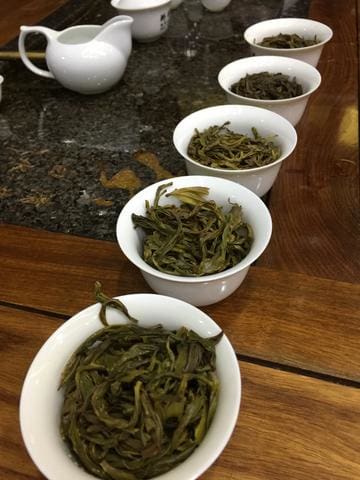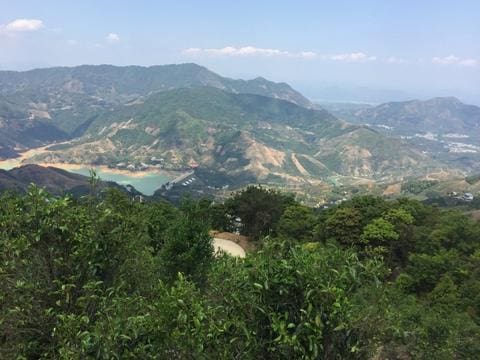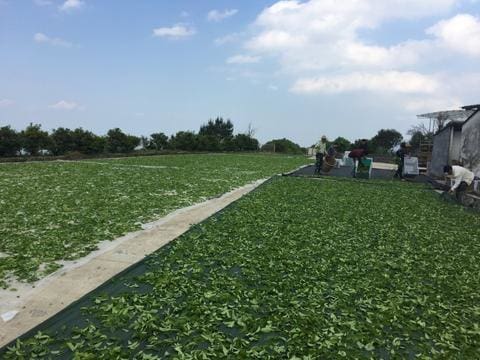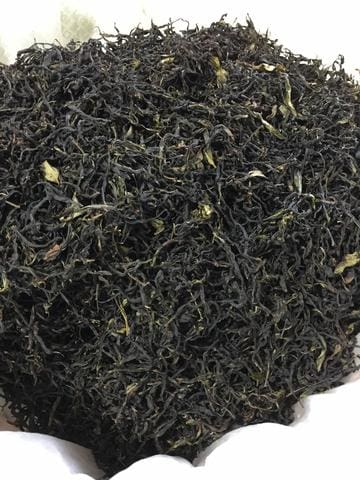
What’s So Special about Phoenix Dan Cong Oolong?
Phoenix Mountain oolongs have a reputation for being some of the most complex teas available, and for good reason. From the appearance of the leaves to the intoxicating aromas, this oolong tea proves itself to be simultaneously alluring and elusive.

The same leaf can showcase colors from green and yellow to red and black, and this diversity of color is reflected in the taste, which can be both floral and spicy, vegetal and rich like dark chocolate. Phoenix oolong has been found have more than 100 different fragrances, with a couple dozen being the most common. How is this possible?
Phoenix oolong tea derives its namesake from Phoenix Mountain in Guangdong Province, China. The environment in this area, which is often covered in a thick shroud of mist, provides excellent growing conditions for tea, constantly nourishing, hydrating, and protecting the vegetation. In conjunction with frequent rainfall, plentiful sunlight, and high humidity, the tea leaves grow to be large, vibrant, and luscious, with high concentrations in healthy phytochemicals.

Because of the high elevations, exceeding more than 1200 meters at times, there can be a sudden shift in temperature in the evenings, which further increases the complexity of the tea leaves. Something similar happens with Taiwanese high mountain oolongs, and in both cases, tea drinkers will instantly notice unusually intense aromatics from the leaves, but whereas Taiwanese high mountain oolongs tend to be more floral, Phoenix Mountain oolongs tend to be extremely fruity, like spring honey sweetness or lychee. Of course, there are many different kinds of Phoenix oolongs, and so it can certainly vary from tea to tea.
In addition to the environment, the processing of Phoenix oolongs is very labor-intensive, and this also contributes to its unique flavor profiles. First, the tea leaves are withered briefly in the sun, somewhat like a white tea except they are not completely dried.

Next, tea masters manually oxidize the leaves through shaking and rotating processes. This step can be very time-consuming, as they work in 5 to 6 stages, allowing the leaves to rest between each stage, inspecting them for the right appearance, aroma, and feel. The goal is to produce leaves that are less oxidized near the middle and more oxidized near the edges, which is why you will find your Phoenix oolong tea leaves having this radiation of green to red from center to edges. By varying the agitation of the leaf, the tea masters are able to bring out a greater range of flavor than if the leaves had been completely oxidized.
During the third step, the tea leaves are pan-fired or machine fired several times, and while the leaves are still hot, tea masters will roll them by hand. Nowadays, this step is mostly done by machine. You can imagine how difficult it can be to handle something fresh off of a frying pan, and it is no different in the case of crafting tea. Many tea masters will end up with some minor burns on their hands from this step. Once the tea leaves have the right texture and aroma though, the process is complete. Tea masters call this finished tea as Mao Cha, ready for the next step, baking or roasting.

Finally, the tea’s complex flavor is completed through a baking process in bamboo baskets over charcoal. This contributes to even more of the unique flavor of Phoenix oolong, really bringing out the full range of flavor that the tea leaves have to offer. It requires a master’s touch to heat the leaves at just the right temperature for just the right amount of time to maximize the flavor and aromatics of the tea.
When you understand exactly what goes into making a Phoenix Mountain oolong, and you start to realize what to expect from the tea itself, you can begin to appreciate what makes it such a special form of tea. The numerous flavors that it offers are certainly challenging for even the most sophisticated palates to distinguish, but it is precisely this level of intrigue and complexity that defines this tea.
At MeiMei Fine Teas, we currently offer two Phoenix oolongs. The first is known as Chi Ye (or “Red Leaf”), and it has only recently started gaining in popularity. It comes from a new varietal that was cultivated from Bai Ye (“White Leaf”), and it is grown in the core producing, high-altitude region of Phoenix Mountain. This particular tea features everything from a subtle smokiness and brown sugar sweetness to baked plum and cherry. Our other Phoenix oolong is Wu Ye (or “Dark Leaf”), and it offers the same level of complexity as Chi Ye except the tasting notes are very different. This exciting tea has a relaxing floral quality to it, reminiscent of fresh gardenia, and combines this with hints of caramel and creamy chocolate. The exciting new arrivals, including the famous Ya Shi Xiang fragrance, Honey Orchid fragrance, Pomelo Flower fragrance, Song Zhong fragrance, Magnolia fragrance.
Some people find the complexity of the Phoenix oolong overwhelming, preferring Taiwanese oolongs or Wuyi Rock oolongs, but we think this is precisely the quality that makes the Phoenix oolong so outstanding. It is like a classical Baroque-era fugue in a sea of contemporary pop music with repetitive, simplistic rhythms. Though they haven’t quite received the attention that they deserve in the West, we don’t mind keeping them our own little secret.
